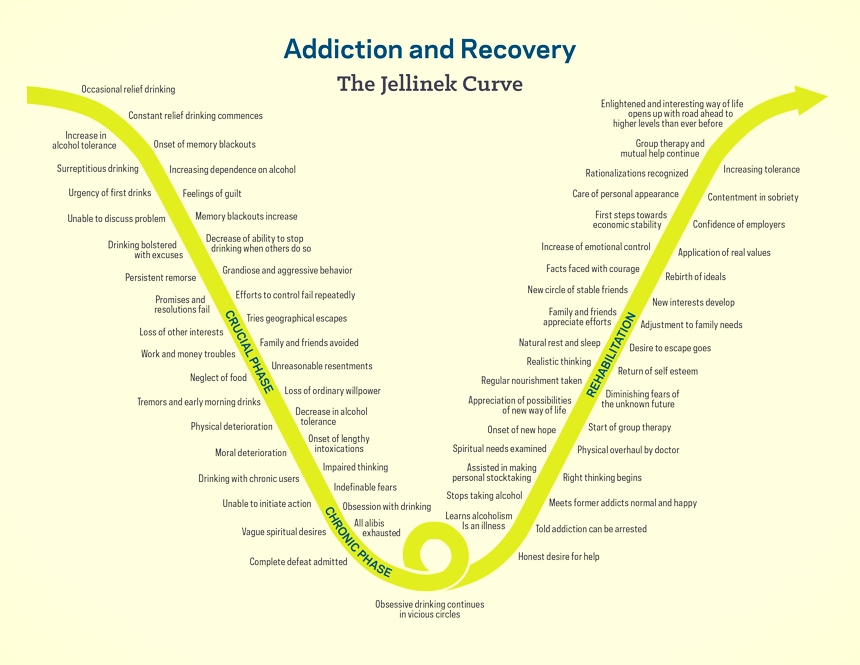The name E.M. Jellinek and The Jellinek Curve might be unfamiliar but the changes he brought to the field of addiction studies are well-known.
From the 1930s until his death in 1963, Dr. Jellinek worked laboriously to learn more about alcoholism, addiction, and mental health. While his contributions to the understanding of substance abuse continue to influence the field today, perhaps his most enduring legacy comes from his extensive efforts to educate the public on the nature of addiction.
Through his studies of alcoholism, and thanks to his fascination with the drinking histories of alcoholism, Jellinek began to recognize that alcoholism had a pattern of progressive phases.

After examining a portion of the responses from a survey sample, Jellinek ultimately determined that there were four identifiable phases of alcoholism, which were used in addiction recovery programs.
Before long, Dr. Max M. Glatt from the Warlingham Park Hospital substance abuse treatment facility in England also observed progressive behavioral patterns in recovery. Glatt added the phases that reflect recovery to the Jellinek Curve, a tool for understanding addiction that’s still used regularly in treatment facilities.
In the 1930s, Jellinek began working in Massachusetts at Worcester State Hospital, where he researched schizophrenia before the Research Council on Problems of Alcohol recruited him.
By 1943, Jellinek was the director of the first alcoholism training and education program at the Yale Summer School of Alcohol Studies, where he worked to depoliticize alcoholism. Jellinek became an early proponent of utilizing the scientific approach to understanding alcoholism and is credited with being one of the first to support the disease model for understanding addiction.
Enduring contributions to recovery

While Jellinek’s conceptualization of addiction as a curve continues to be an often utilized tool today, the curve embodies Jellinek’s enduring legacy rather than defines it.
He had a plethora of intellectual gifts that often intersected and afforded him the ability to intuitively grasp concepts, but his ability to communicate information to the layperson might constitute his greatest contribution to the field of addiction science. Jellinek penned a series of ‘Lay Supplements’ — accessible pamphlets that explained the nature of alcoholism to a general audience and allowed his likeness to be featured in an education cartoon produced by the World Health Organization.
In addition, the accomplishments he made during his career continue to help inform the public about the nature of alcoholism. He was responsible for spearheading the indexing and abstracting work necessary to create the Classified Abstract Archive of the Alcohol Literature (CAAAL), the first-ever database of scholarly work on alcoholism, which helped bolster understanding. His book the Disease Concept of Alcoholism, published in 1960, was instrumental in disseminating the disease model of addiction to the public.
Jellinek believed that in the fight against addiction, education afforded invaluable protection and his work continues to provide essential information about substance abuse to the public.

















